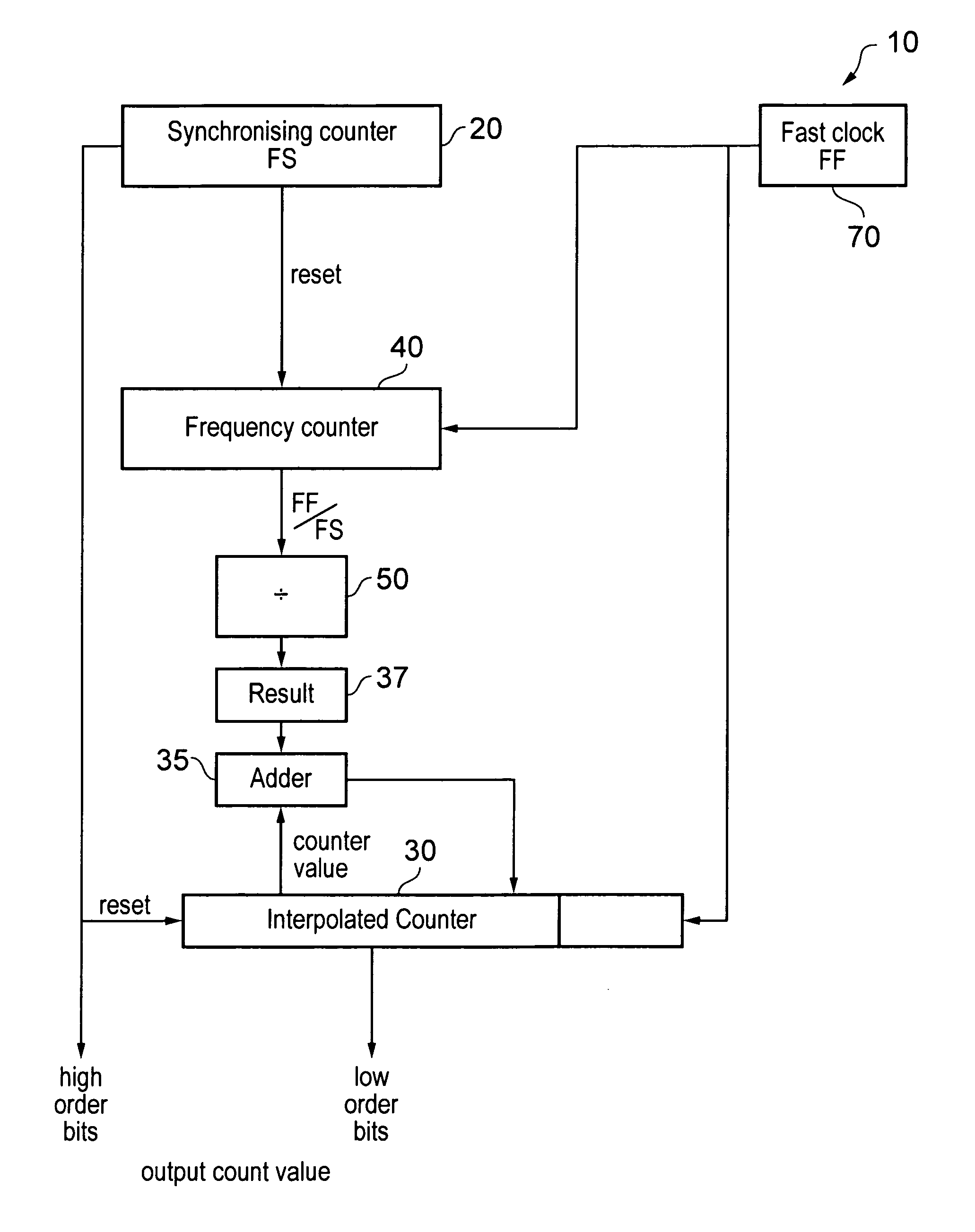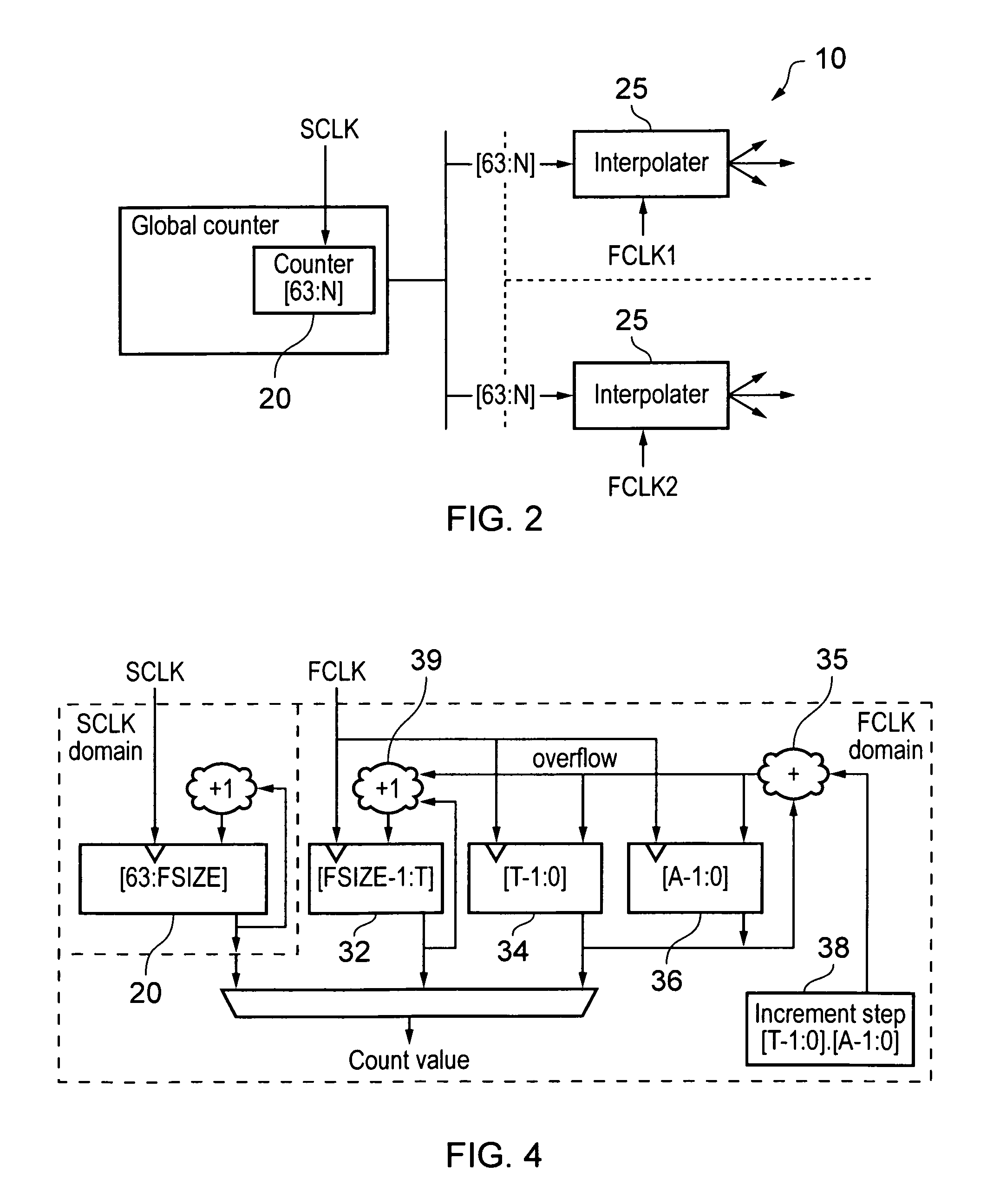Generating a regularly synchronised count value
a count value and count value technology, applied in the field of counters, can solve the problems of difficult to provide a timestamp that is consistent across the system, and the high frequency clock will clearly consume significant power, so as to achieve high resolution count, increase power consumption, and high resolution count value
- Summary
- Abstract
- Description
- Claims
- Application Information
AI Technical Summary
Benefits of technology
Problems solved by technology
Method used
Image
Examples
Embodiment Construction
[0046]FIG. 1 shows schematically how a count value varies with time when it increments at a slow frequency the large step showing a slow count, or when it increments at a faster frequency the smaller steps illustrated a fast count. As can be seen the fast count steps follow the “ideal” line more closely and if they are being used to provide an estimate of time provide a more accurate idea of current time than the slower count steps.
[0047]Embodiment of the current invention are concerned with using a faster clock to provide the smaller steps by generating the lower order bits of a count value and thereby providing a count value with higher resolution, while generating the higher order bits of a count value from a slower count value. The slower count value can be used as a synchronising count value where different fast clocks can be used to provide intermediate steps which are synchronised by the slower stepped slow count value.
[0048]FIG. 2 shows schematically a circuit 10 for generat...
PUM
 Login to View More
Login to View More Abstract
Description
Claims
Application Information
 Login to View More
Login to View More - R&D
- Intellectual Property
- Life Sciences
- Materials
- Tech Scout
- Unparalleled Data Quality
- Higher Quality Content
- 60% Fewer Hallucinations
Browse by: Latest US Patents, China's latest patents, Technical Efficacy Thesaurus, Application Domain, Technology Topic, Popular Technical Reports.
© 2025 PatSnap. All rights reserved.Legal|Privacy policy|Modern Slavery Act Transparency Statement|Sitemap|About US| Contact US: help@patsnap.com



